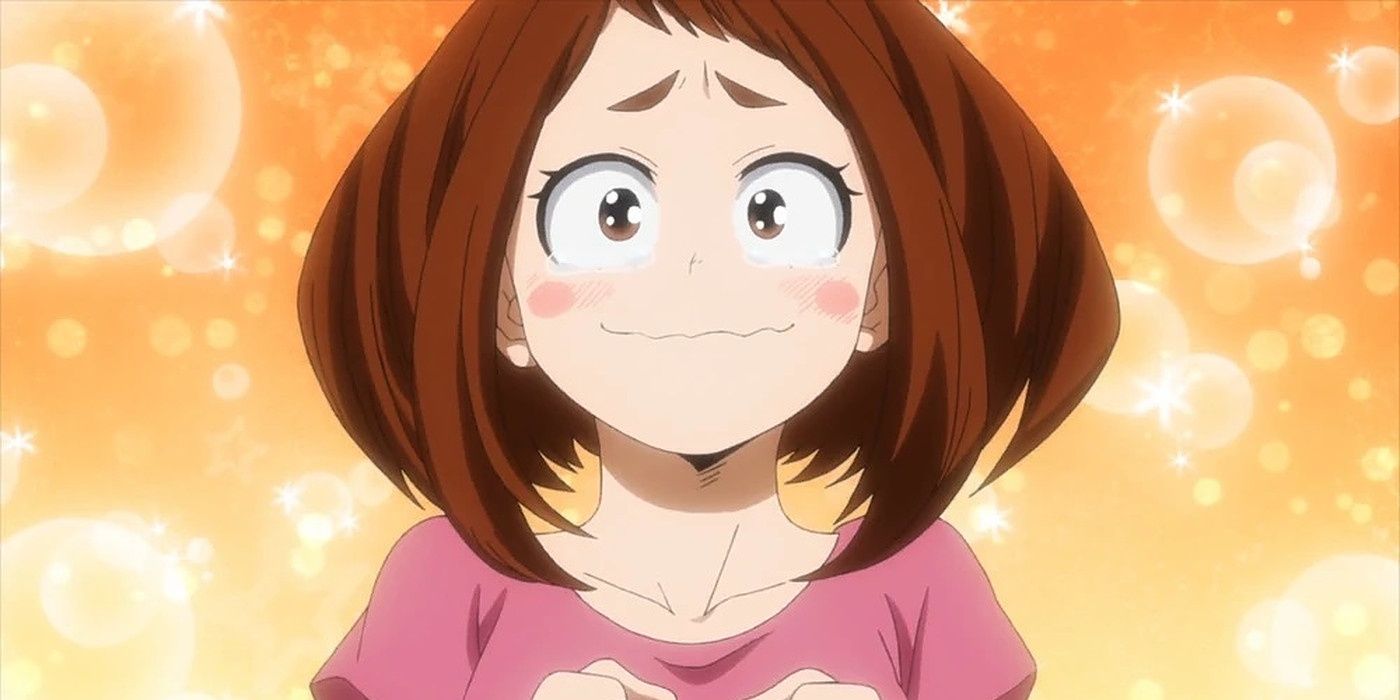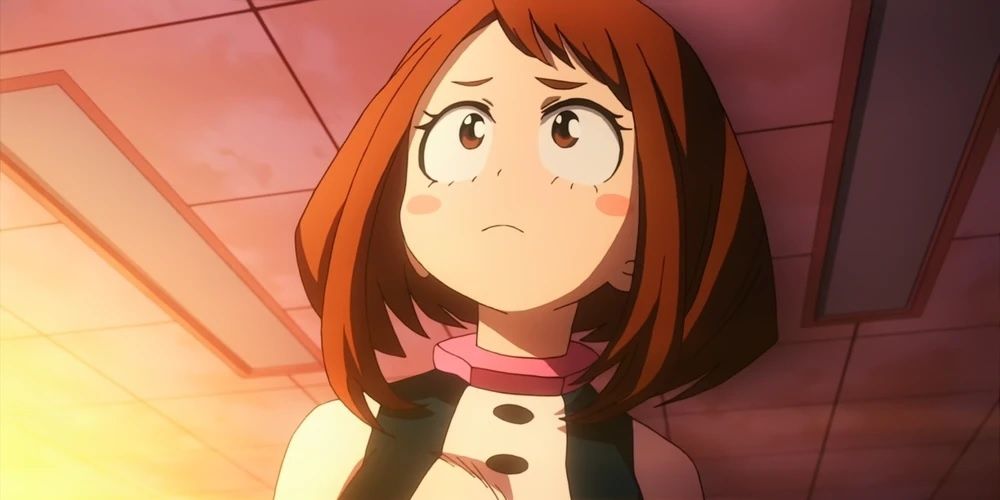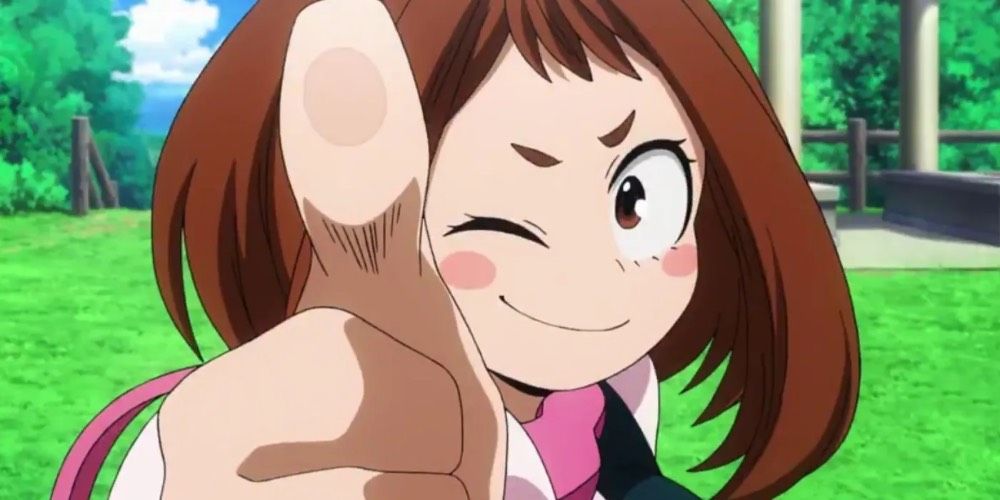My Hero Academia is a superhero shonen anime that stars the next symbol of peace, the zero-to-hero protagonist Izuku Midoriya. Along the way, a handful of Izuku's classmates at the UA school also get their own heroic arcs, growing as people and as fighters, such as the icy Shoto Todoroki and the recently redeemed Katsuki Bakugo.
Most of all, fans have been watching Ochaco Uraraka with great interest, with Ochaco being Izuku's admirer and a fellow zero-to-hero character like him. Most importantly, unlike some supporting female characters in fiction, Ochaco is neither sidelined as a token girl nor presented as a "Mary Sue" in an effort to catch up to the boys. Instead, Ochaco is treated fairly as a balanced and nuanced shonen heroine, and that's what makes her a Best Girl.
Ochaco Uraraka's Balance as a Shonen Heroine
Balancing a character's strengths and flaws is never easy in shonen anime or other demographics, and it seems doubly tricky to pull off for female characters, who often seem to have different expectations among readers and are scrutinized more closely. Ideally, a balanced character has enough strengths to get things done and move the story forward, while having enough flaws to be relatable and have a meaningful personal challenge to overcome. Some shonen characters start off balanced and end up perfect, like a Mary Sue, with examples in shonen including Naruto Uzumaki and Ichigo Kurosaki near the end of their arcs. However, Izuku is not like that, and neither is his female counterpart, Ochaco Uraraka.
From the very start, Ochaco's personal arc has shown her bravely facing and overcoming relatable and meaningful challenges on the inside and outside, and while she never had it easy, Ochaco has the grit and passion necessary to forge ahead all the same. She was born with a Quirk, unlike Izuku, but her zero-gravity Quirk is mediocre at best and cannot deal damage on its own. Ochaco was challenged to become a real fighter, and she did so by smartly comboing with Tsuyu and training with Gun Head to learn CQC, or close-quarters combat. Ochaco often failed, such as her painful defeat to Katsuki Bakugo in the UA sports tournament, but those were simply an opportunity to grow.
At no point did My Hero Academia sideline Ochaco as the token girl who just cheers on and worries for the male lead. Even if Ochaco's arc eventually took a back seat to the Izuku-Shoto-Bakugo golden trio, Ochaco has been steadily growing, smoothly scaling up as the series progressed, all without being "useless" like Sakura Haruno or a Mary Sue either. Like many of her classmates, including Momo Yaoyorozu and Eijiro Kirishima, Ochaco has enough flaws to struggle in sympathetic ways and just enough strengths to slowly overcome these challenges. In this way, Ochaco has avoided many of the older, negative character arc clichés of female characters like her, getting the same balance that Izuku and other shonen leads usually get. That's what made her a Best Girl and not just "the girl."
Shonen Girls Like Ochaco Are Heavily Scrutinized
It's true that shonen, as per its name, is designed with young male audiences in mind, including casts of characters that skew male -- or in something like JoJo's case, almost entirely male -- so the female characters stand out all the more. Still, in some series, those girls may feel like outsiders in a boy's club and are treated accordingly, which usually makes for a skewed narrative. Shonen anime has a history of marginalized and tokenized female characters -- a trend that's finally being reversed with characters like Nobara Kugisaki, Power the horned fiend and certainly Ochaco. However, having prominent and fairly balanced female characters like her still feels relatively new, so anime fans may pay closer attention to these characters to see if they measure up to their male counterparts.
In her case, Ochaco easily stands up to scrutiny on all fronts, from her charming and complex personality to her balanced and cool combat powers and smooth, compelling character arc. She's an evolution of the likes of Sakura Haruno and Orihime Inoue, being more than a cheerleader or token girl who learned to fight. Equally importantly, author Kohei Horikoshi didn't overcompensate for shonen's weak treatment of girls by making Ochaco or her female classmates overpowered to hurry and catch up to the boys.
An OP female character would still be a problem, just in a different way, and some media franchises are already notorious for doing that. Being perfect to show the boys up isn't a solution, and it alienates audiences from the character. Instead, shonen heroines like Ochaco match those boys' balanced power with their own, and the results are spectacular. Even if shonen still has some ground to cover regarding female representation, shonen girls have come a long way, and heroines like Ochaco Uraraka are a perfect formula for how it's done best.



